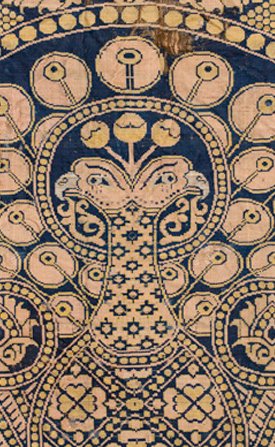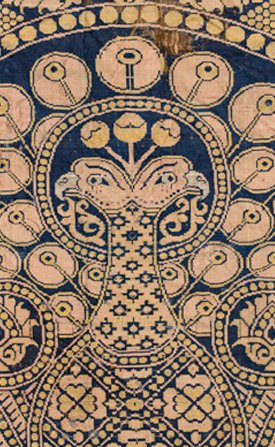What role do textiles play in the cult of relics? The mortal remains of saints are a church's most treasured possession. For centuries, relics have been painstakingly preserved, wrapped in the most exquisite fabrics available. Textiles protect and adorn. They also become relics in their own right by virtue of having touched venerated objects. Others count as relics because a saint once wore them: robes, head coverings, stockings or sometimes just fragments of the same become greatly sought-after mementos of their former owners.
The exhibition shows a wide range of textiles that were used in the cult of relics: large, beautifully patterned pieces of cloth in which the bones of saints were wrapped, finely worked pouches made to hold smaller relics and little pieces of sumptuous silk as packaging for tiny remains. The oldest fabrics date from the fourth to sixth century, while the most recent were woven in the fourteenth century. A few scraps of cloth come from robes worn by famous saints. Also on display is the eleventh-century vestment of Saint Bernward of Hildesheim, from which several pieces were cut for distribution.
Among the highlights of the exhibition are the textiles from the shrine of Saint Godehard in Hildesheim. In addition to fragments of the saint's grave clothes, there are some spectacular silks and altar cloths made of finest linen. That these textiles, which are nearly a thousand years old, can be presented to the public at all is thanks only to the meticulous and delicate conservation work of the Abegg-Stiftung's conservation studio. The textiles are to return to Hildesheim once the exhibition is over.
Riggisberg (Switzerland), Abegg-Stiftung
April 27th –November 9th, 2014
Link
news
Veil and Adornment : Medieval Textiles and the Cult of Relics
Riggisberg (Switzerland), Abegg-Stiftung
April 27, 2014
< BACKApril 27, 2014


